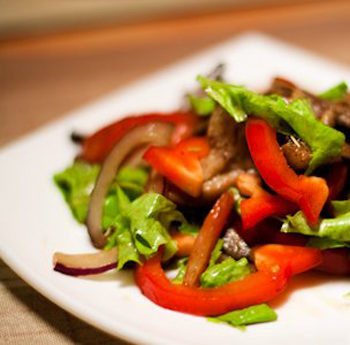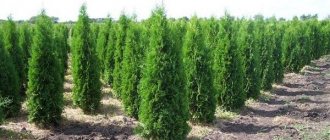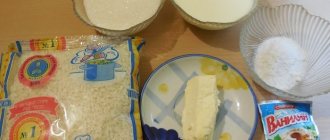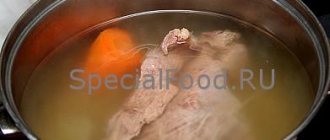For every mother, there comes a crucial moment when it’s time to start introducing complementary foods to the baby. This takes a long time and is associated with many difficulties - the baby’s whims and the risks of negative reactions (digestive problems, allergies, poor absorption of new food).
The most practical supplement to breastfeeding would be porridge.
The market offers a wide variety of cereals for first feeding: regular, instant, canned, with and without gluten. Different manufacturers, different prices. It is very difficult for a responsible mom to choose.
Dairy-free cereals for first feeding.
Hypoallergenic cereals: review of manufacturers.
Which porridge to choose for the first feeding?
Due to gluten, oatmeal It is more practical to introduce it from 8 months of life.
For the same reason, semolina
corn after other cereals.
Rice porridge in complementary foods will help a premature baby gain weight.
But you should start complementary feeding with buckwheat porridge.
Buckwheat porridge for first feeding
Why buckwheat ? What are the benefits and advantages of buckwheat for first feeding?
Buckwheat is a storehouse of vitamins, microelements (phosphorus, copper, iron, iodine, vitamin E), fiber, and amino acids.
Buckwheat is hypoallergenic . Very rarely causes allergies, rashes, dermatitis.
The risk of anemia is reduced due to the large amount of iron in the porridge.
Complex carbohydrates (about 70%) help the body grow and provide energy for several hours. The child is full and the sugar level does not jump.
Plant protein (about 10%) actively forms and develops the skeleton and muscles. Easily digestible by the baby.
The increased fiber content improves the functioning of the intestines, stomach, and liver - food is better absorbed.
B vitamins and potassium improve heart function (strengthens the walls of blood vessels) and increase immunity.
Rutin increases resistance to colds.
If a child is gaining weight slowly and slowly, then it is advisable to start complementary feeding with cereals. Or if you are constantly sick, often have diarrhea, then buckwheat is recommended for high-calorie nutrition.
Sometimes buckwheat in complementary foods is fraught with problems - excess can lead to bloating , flatulence, discharge in the stool, constipation, colic, and malaise. Individual intolerance to buckwheat occurs extremely rarely.
Adding sugar, salt or other ingredients (not according to age) can lead to intestinal problems.
It is worth keeping the cereal away from odors, because it absorbs them like a sponge. And the baby will not want to eat porridge with a strong unpleasant odor. Especially away from household chemicals.
Buckwheat porridge in the diet of children
Buckwheat is a grain unique in its properties, one of the most useful. Experts attach special importance to it in the diet of children. Mothers are interested in what form and when can buckwheat porridge be given to a child, how to properly prepare porridge for a baby, and is it possible for the baby to be harmed by it?
Buckwheat is a plant that was first grown over 4 thousand years ago in India. Then it spread throughout Asian countries, and came to Russia around the 7th century.
Currently, this unique cereal and honey plant is grown mainly in Russian fields, in Belarus, Ukraine and China. In other countries of the world, buckwheat is used mainly as livestock feed or a product for special diets (for which it is sold in pharmacies with prescriptions).
Since buckwheat prevents the growth of weeds, pesticides and fertilizers are not used in its fields. The value of buckwheat also lies in the fact that only natural grains are sold - they have not been subjected to genetic modification.
Composition and calorie content
Buckwheat contains almost all the valuable substances necessary for the functioning of the body.
If in 100 g of raw cereal carbohydrates make up about 62%, fats – about 3%, and proteins – almost 13%, then porridge cooked in water has a different nutritional value. Slowly processed carbohydrates make up up to 33%, complete proteins, including essential amino acids, contain about 6%, fats – 2.6%.
The energy value of raw and cooked cereals is also different: 313 kcal per 100 cereals and about 110 kcal per 100 g of dairy-free porridge.
https://www.youtube.com/watch?v=vjlDIOxS1UA
100 g of buckwheat porridge cooked in milk contains 6.7 g of proteins, about 28 g of carbohydrates and 2.2 g of fat. Its energy value is 151.6 kcal.
The unique nutritional value of buckwheat is determined by:
- rich content of easily digestible fiber;
- a wide range of microelements;
- vitamins (A, B, E, PP);
- organic acids (acetic, oxalic, citric).
It is important that buckwheat does not contain gluten (natural proteins, gluten from cereals, which contribute to the development of an allergic reaction).
Minerals are presented:
- microelements (phosphorus, calcium, sodium, magnesium, potassium);
- macroelements (iron, molybdenum, copper, zinc, silicon, chromium, iodine, cobalt, manganese).
Benefit
Buckwheat is considered the healthiest for children.
The beneficial properties of buckwheat for children are due to its composition:
- B vitamins, copper, and phosphorus ensure normal development and function of the nervous system, have a calming effect on the child, normalize sleep, and help avoid nervous disorders and depression.
- Iron and folic acid (vitamin B9) are important for the prevention and treatment of anemia in children. Eating buckwheat activates hematopoiesis and the formation of red blood cells (erythrocytes).
- Phosphorus, calcium, silicon provide mineralization, strength of bones, and tooth enamel.
- Potassium, magnesium, vitamin B6 (pyridoxine) are necessary for normal myocardial (heart muscle) function and proper heart rhythm.
- Complete proteins are building materials for the synthesis of cells and tissues of a growing organism.
- Vitamins E and A, which have a pronounced antioxidant effect, help the body get rid of toxins and radionuclides. For this reason, buckwheat must be included in the diet of children from regions with unfavorable environmental criteria.
- Thanks to the slow absorption of carbohydrates, buckwheat gives the child a feeling of fullness and a surge of strength for a long time.
- Buckwheat fiber enhances peristalsis (the movement of its contents through the intestines). This will help relieve constipation in your child.
- Zinc and riboflavin (vitamin B2) are especially useful for dermatitis in children. They improve hair growth and ensure healthy skin and nails.
- The low calorie content of buckwheat dishes allows them to be consumed in children with obesity and diabetes.
- The vitamin and mineral composition of buckwheat has a general strengthening effect and helps increase the child’s defenses.
Harm
Buckwheat does not contain any harmful substances that can have a negative effect on the child’s body. Problems can only arise if cooking rules are violated (exceeding the dose of cereal or flour) or as a result of excessive consumption of porridge. This may cause:
- bloating (flatulence);
- discomfort;
- stool disorder.
If a baby under one year of age cooks porridge with milk, constipation may occur.
Before each feeding, you should prepare a fresh portion of porridge. As a last resort, the finished product can be left in a sealed container in the refrigerator for up to 24 hours. Buckwheat porridge can be given to children once a day up to 3 times a week.
When and how to introduce it into the diet
The absence of gluten in buckwheat, as well as the hypoallergenic nature of the product, make it possible to introduce buckwheat porridge to infants as complementary foods. Buckwheat is one of the first to be introduced (together with rice porridge).
According to most pediatricians, it is better to give buckwheat porridge to the baby as a second complementary food after fruit and vegetable purees. Although some doctors may recommend buckwheat as a first complementary food.
- If the child is breastfed, then buckwheat porridge is given to him at 8-9 months.
- For babies receiving artificial milk formula, complementary feeding with buckwheat porridge is introduced 1-2 months earlier.
For the first test, it is recommended to prepare 5% buckwheat porridge, which mom can make herself using a coffee grinder. Children under one year old should cook porridge without sugar and salt.
The porridge is prepared in water; you can add a little breast milk or formula to the finished dish to get the usual taste so that the baby likes the porridge.
Despite the fact that buckwheat practically does not cause allergies, it should be given to the baby for the first time in the morning, only 0.5-1 tsp. before a breakfast dish (or before breastfeeding or formula feeding).
After this, you need to observe how the body reacts to the new product. In very rare cases, buckwheat proteins can cause an allergic reaction.
Its manifestations may be:
- swelling on the face or other parts of the body;
- rashes like urticaria;
- the appearance of redness on the face (around the lips, on the eyelids);
- runny nose (sometimes cough);
- in some cases shortness of breath;
- nausea, vomiting, diarrhea.
It is not necessary to show all the symptoms. At the slightest suspicion of an allergy, you should consult a doctor and not self-medicate your child. And of course, stop eating buckwheat.
In the absence of any negative reactions to the new complementary foods, the portion of porridge is doubled daily, and the amount of main feeding for breakfast is reduced.
Gradually, over 7-10 days, the portion of porridge is brought up to the age norm (120-150 g - depending on the baby’s body weight).
At first, you can give the porridge from a bottle. But gradually, from 10-11 months, you should prepare it thicker and switch to spoon feeding. To improve the taste, you can add 1 tsp. vegetable or butter.
Most kids willingly eat buckwheat porridge, but some children may refuse it. Under no circumstances should you force feed. You need to offer the product the next day, be patient and gradually accustom your child to such a useful product.
You can use ready-made industrially produced buckwheat porridge:
- It is enriched with minerals and vitamins, and may contain chopped dried fruits.
- Before feeding the baby, the dry formula is diluted with boiled water (its temperature is indicated in the instructions), mixed thoroughly so that there are no lumps.
- The amount of dry mixture depends on the age of the baby.
For children over one year old, you can cook porridge not from flour, but from buckwheat, in milk, add a little salt or sweeten it. After a year, the portion can reach 200 g. Instead of cow's milk, you can use formula. If milk intolerance is present, porridge for children of any age should be prepared with water.
From 8 months of age you can add to slightly cooled porridge:
- banana;
- grated apple;
- peach or apricot;
- raisins (pre-soaked in water).
They will improve the taste of the porridge and sweeten it. But fruits can be added only if they have already been previously introduced into the baby’s diet.
From 10 months of age you can add minced meat to the dish:
- from beef;
- turkeys;
- Chicken;
- a rabbit.
For children over one year old, porridge can be given as a side dish to a steamed meat or fish cutlet. It is not recommended to give offal to children under 3 years of age.
How to select and store buckwheat
- It is better to buy cereal in transparent packaging so that you can see its contents. There should be no pebbles or other debris.
- It is better to buy light buckwheat. Dark-colored cereals are of low quality: longer heat treatment leads to the loss of a significant part of the nutrients. It is often supplied from China.
- It is recommended to pay attention to the label, which indicates GOST and the type of cereal. You should choose first grade cereal, the highest quality. There are no “Higher” or “Extra” varieties of buckwheat; their indication on the label indicates the manufacturer’s dishonesty.
- The shelf life of buckwheat should not exceed 20 months if storage conditions are met. Therefore, you need to pay attention to the date of packaging of the cereal on the packaging itself, since the date on the affixed label may be unreliable.
When storing buckwheat, high humidity should not be allowed - this will lead to the appearance of mold and bugs. A spoiled kernel has a musty, moldy smell.
https://www.youtube.com/watch?v=w_i8VMW8EyE
After purchasing, buckwheat should be poured into a glass or plastic container with a tight lid. You can also use a fabric bag for storage, which must first be boiled in a saturated solution of table salt and dried.
It is advisable to keep the container with cereal in a dry, dark, cool place away from foods with a strong odor (cereal easily absorbs them). Chestnuts or lemon zest placed in a container with cereal will repel pests.
When purchasing ready-made buckwheat porridge, you should carefully study the label, paying attention to the expiration date and composition. The product should not only contain flavorings and preservatives, but also soy, lecithin, rapeseed and coconut oil, and sugar.
It is best to trust world-famous manufacturers:
- Heinz,
- Humana,
- Remedia,
- Bebi.
Buckwheat recipes
To prepare porridge for babies, they use buckwheat flour rather than cereal.
Before cooking, the cereal must be sorted, remove foreign impurities from it, and then rinse thoroughly with running water. If flour is being prepared, the cereal must be dried before grinding.
Porridge for babies
- To prepare it, pour 100 ml of water into a small saucepan and add 1 tsp while stirring. buckwheat flour.
- After boiling, the porridge should be cooked over low heat with stirring for 15-20 minutes, turn off and let it brew for a while.
- This porridge will be liquid; you can add a little breast milk to it.
To get a thicker porridge for a child after 10 months, you need to take 2 or 3 tsp per 100 ml of water. buckwheat flour.
Porridge with milk
It is prepared for children after one year.
- To cook, pour half a glass of water into a saucepan and add half a glass of washed buckwheat.
- Cook the porridge over low heat while stirring until the water has completely evaporated.
- After this, you need to add half a glass of milk (or diluted milk mixture) and, continuing to stir, cook for 7-10 minutes (in total, the porridge will cook for 20-25 minutes).
Dairy-free porridge for older children
If older children are intolerant to milk, they can cook porridge with water.
- To do this, add 1 cup of buckwheat to a saucepan with 2 glasses of water.
- After boiling, carefully drain the water and add 2 glasses of water again - this will get rid of the bitter taste of the porridge if the child does not like it.
- During the cooking process, add sugar (1 tsp) if desired.
- The porridge is cooked for half an hour over low heat, butter is added to it.
If you let it sit for 10 minutes (you can wrap it up), it will become more crumbly.
Souffle
To prepare the dish you need:
- rub 250 g of cottage cheese through a sieve;
- separate the yolks of 2 eggs and mix them with the curd mass;
- grind 100 g of washed and dried buckwheat through a coffee grinder;
- bring 400 ml of milk to a boil;
- add buckwheat flour and 100 g of butter to the milk, leave while stirring over low heat for 5 minutes;
- remove the milk from the heat and leave it to cool;
- mix buckwheat with cottage cheese and yolks;
- add 2 tbsp to the mixture. l. Sahara;
- Beat the remaining whites and carefully add them to the dish;
- Place the resulting mass in a greased baking dish;
- bake at 180 0C for 20 minutes.
Buckwheat with vegetables
Cooking:
- rinse 150 g of buckwheat and cook it in a saucepan;
- grate 100 g of pumpkin pulp and 1 small carrot, finely chop 1 onion;
- Simmer all the vegetables for 10 minutes, adding 15 ml of vegetable oil;
- mix the porridge with vegetables, mix well;
- add a little water and simmer the dish for 3-4 minutes under the lid.
Summary for parents
According to nutritionists, buckwheat porridge is the most healthy of all other porridges. This is what experts recommend as complementary food for infants.
It not only has great nutritional value. It activates metabolism, improves blood composition, and promotes normal brain development. It is easily digestible, does not contain gluten, which causes allergies, provides the body with essential minerals and vitamins, and helps strengthen the immune system and the body as a whole.
Buckwheat gives you a feeling of satiety, but does not lead to weight gain. With or without milk, buckwheat porridge is an indispensable dish for children.
Source: https://babyfoodtips.ru/20204784-grechnevaya-kasha-v-racione-detej/
At what age should a child be given buckwheat?
Most often, complementary foods are introduced between 4 and 6 months, depending on the child’s development. At 4 months this is early complementary feeding, but if the child is developing well, he is cheerful, active, inquisitive, then why not?
At 4-5 months, complementary foods made from buckwheat porridge are introduced for children with artificial nutrition.
Usually, if vegetable puree was introduced first, then porridge is given after a month. Closer to 8-9 months.
Each new product is given within 3 weeks. The body's reaction is monitored and allergies are checked. You can add a new product after a specified period.
A food diary can help during the period of introducing complementary foods : this will make it easier to count the time period, reactions to foods, remember what has already been introduced, what is to come, and what the baby likes.
The following simple signs will help the mother easily understand that the baby is ready to introduce buckwheat into complementary foods :
- Baby teeth appear.
- The child can sit confidently.
- Interested in what mom and dad are eating.
- Licks the pulp from the spoon and then swallows the contents.
- Shows that he is still hungry immediately after breastfeeding.

The benefits and harms of buckwheat porridge for children
Buckwheat is a unique grain; it is very useful for both adults and small children under one year old. Its benefits have been known for a long time. Even in the old days, when people had not yet heard about various scientific studies, buckwheat was already one of the main products. It adds strength, the child grows faster, becomes healthy, strong and smart.
Compound
The composition of buckwheat, rich and saturated with useful substances, is combined with its high nutritional value. The child is well saturated with buckwheat porridge.
At the same time, the calorie content of the cereal is low - one hundred grams of the product contains only 110 calories, if you do not consume it with milk.
The unique nutritional value is primarily due to the rich content of easily digestible fiber, slowly processed carbohydrates and complete protein.
What substances are included in buckwheat porridge, making it so healthy:
They are indispensable for maintaining the child’s nervous system in order.
Buckwheat is very rich in iron. This is the prevention of anemia.
Calcium in cereals strengthens children's bones and is beneficial when children up to one year old and after are teething.
Potassium helps the heart beat more smoothly and become stronger. Buckwheat also contains many minerals in smaller quantities, such as manganese, cobalt, zinc, copper and sodium.
Buckwheat contains especially healthy carbohydrates that are slowly absorbed, so they keep you feeling full for a long time and give you strength for a long time. This factor makes buckwheat recipes indispensable in children's kitchens.
Buckwheat is useful due to the content of complete, healthy protein - the child grows quickly and becomes stronger.
About ten percent of buckwheat contains dietary fiber, which allows us to consider this cereal as a dietary dish. Fiber improves intestinal motility, which facilitates the functioning of the baby’s digestive system.
Many mothers know how difficult and difficult it is when a small child becomes constipated.
So, eating buckwheat porridge solves the problem - but at first it is undesirable for this reason to give porridge with milk to a child under one year old.
When to give
Until the baby reaches six months, it is quite possible to live exclusively on mother’s milk. In this case, he receives all the necessary substances. In addition, when consuming breast milk, children, as a rule, have no digestive problems and develop correctly.
Buckwheat recipes may well become your baby’s first complementary foods. Buckwheat can also be introduced as a second complementary food after vegetables. The second is even preferable, since introducing vegetables to a child under one year of age will be better from a nutritional point of view. If the baby is artificial, then the first liquid buckwheat porridge can be given to him as early as 4-5 months.
How to choose the right buckwheat for a child
The kernel is preferable, since in whole grains, again, all the beneficial substances are better preserved. Although the flakes and flour are extremely ground and are absorbed very quickly, but, alas, after strong processing such buckwheat is no longer useful. Plus, recipes made with whole grains taste better.
Choose light cereals; in this case, the roasting of the cereal is minimal, which means that it retains all its beneficial properties as much as possible.
It is better to start feeding a baby up to one year old with buckwheat porridge without milk. In this case, the child is guaranteed not to have constipation when switching to a new type of food. You can also use ready-made factory-produced cereals. In most cases, they already contain powder from fruits and vegetables, and are enriched with vitamins and minerals.
How to cook
Buckwheat porridge recipes for first complementary foods imply the absence of milk, sugar and salt. At 8 months you can already cook it with milk, add cream or butter.
Before giving the porridge to the baby, you need to grind it. Ready-made cereals are usually liquid, so the child can feed them from a bottle.
Usually, when switching to eating porridge, the baby, having eaten, begins to sleep peacefully at night, which brings great relief to the parents.
- Buckwheat porridge recipe for infants
- Sort through the cereal, removing all specks and spoiled grains.
- You need to grind the buckwheat in a coffee grinder.
- Pour the resulting mixture with water in proportion to one tbsp. spoon - half a glass of water.
- Bring to a boil and simmer for 15 minutes.
- Cool. If the child's age allows it, add milk.
- That's it, the porridge is ready, you can feed the baby.
- Recipe for children over one year old
- Sort through the cereal.
- There is no need to grind anything here anymore. Simply add water to the cereal and bring to a boil.
- After the porridge has boiled, drain the first water - this will remove the bitter taste from the finished dish.
- Pour water over the cereal again and cook for half an hour.
- Add sugar to the cooking process.
- Add a little butter to the prepared hot porridge and cool. You can also top it with milk.
Source: https://mamaipapa.org/pitanie/grechnevaya-kasha.html
Features of complementary feeding with buckwheat porridge
Some tips for mothers regarding complementary feeding with buckwheat.
It is preferable to choose light-colored buckwheat . The lighter, the less roasting and the more healthy.
A whole kernel is desirable . This is an indicator of good quality and the porridge will not be sticky. Flour and flakes are not suitable for baby food.
It is better to store in ceramic or glass containers for better taste and quality. No foreign odors.
At first, it is better to cook in water , without unnecessary substances (without adding salt, butter, sugar, dried fruits). This way the dish is better digestible. It is more practical to combine porridge with vegetables and steamed cutlets.
Features of preparing buckwheat porridge for complementary feeding
Here are a few tips on how to prepare buckwheat porridge for a child:
- Cook only on the stove. No microwave.
- Check the grains before cooking. Sort through them, wash them several times, and dry them.
- Dosage: one teaspoon of buckwheat per 100 ml of water (purified).
- Before giving complementary foods to your baby, you need to cool it down.
- You can grind the porridge until smooth for convenience.
- You can just try adding fruits (banana, apple, carrots, broccoli, boiled dried apricots or prunes) with porridge. They are added before serving.
- After 7 months, if there is no allergy, then you can cook the porridge with cow's milk.
- At 1 year of age, you no longer need to grind ready-made porridge.
- You can put a small piece of butter in the finished one.










